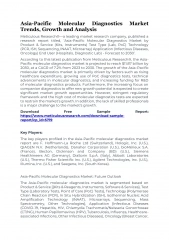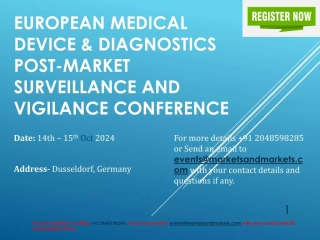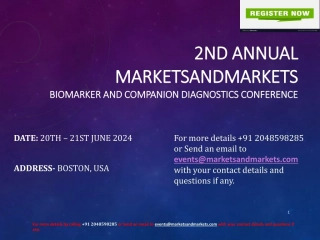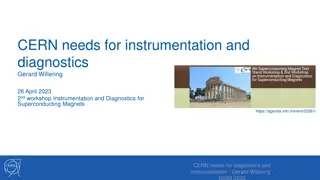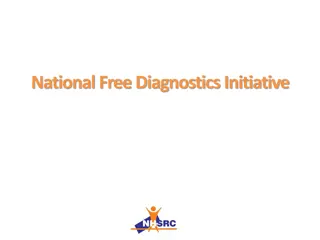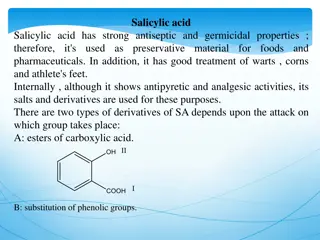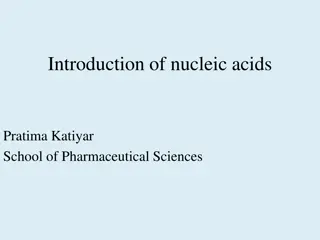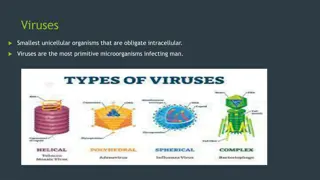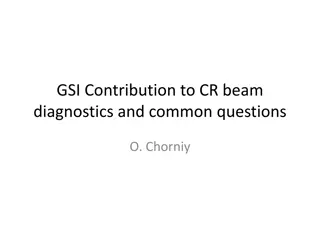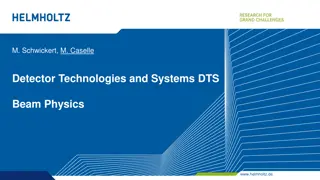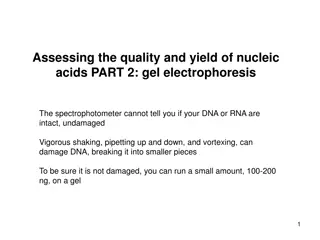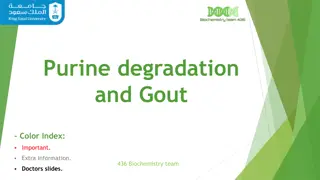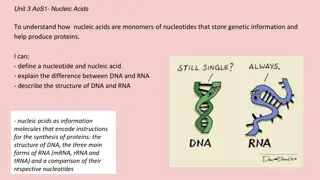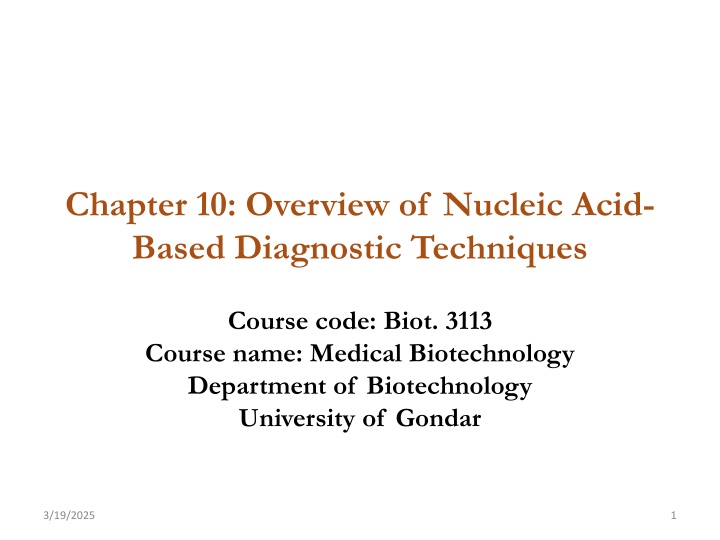
Overview of Nucleic Acid-Based Diagnostic Techniques in Medical Biotechnology
Explore the operational characteristics, advantages, and drivers of molecular diagnostics in the field of medical biotechnology. Learn about different types of PCR techniques such as Single-Step, Nested, and Multiplexed PCR, their advantages, and applications in areas like malaria surveillance, epidemiology research, and more.
Download Presentation

Please find below an Image/Link to download the presentation.
The content on the website is provided AS IS for your information and personal use only. It may not be sold, licensed, or shared on other websites without obtaining consent from the author. If you encounter any issues during the download, it is possible that the publisher has removed the file from their server.
You are allowed to download the files provided on this website for personal or commercial use, subject to the condition that they are used lawfully. All files are the property of their respective owners.
The content on the website is provided AS IS for your information and personal use only. It may not be sold, licensed, or shared on other websites without obtaining consent from the author.
E N D
Presentation Transcript
Chapter 10: Overview of Nucleic Acid- Based Diagnostic Techniques Course code: Biot. 3113 Course name: Medical Biotechnology Department of Biotechnology University of Gondar 3/19/2025 1
Introduction Attributes of molecular assays Disadvantages Advantages Can be time consuming High sensitivity Expensive Earlier detection of infections Extensive training required Quantification Mixed infections require more Species differentiation elaborate assay designs Strain identification to Requires cross contamination distinguish new and provisions recrudescent infections Standardization is complicated Potential for high throughput 3/19/2025 2
Drivers of Molecular Diagnostics Innovation Malaria surveillance programs Epidemiology research Blood bank screening Travel medicine Hunt for sub-patent asymptomatics Vaccine and drug studies Passive case detection Genotyping for origin and resistance Competition for intellectual property financial gains 3/19/2025 3
1. Operational Characteristics Types of PCR Single-step Nested Multiplexed Quantitative Design variables Extraction Choice of target Infrastructure capacity 3/19/2025 4
Single-Step PCR Fewer steps and time compared to nested Less risk of contamination Electrophoresis gel readout Range of limit of detection from 0.002-30 p/ l Trade-off less sensitive than nested 3/19/2025 5
Nested PCR Increased specificity two sets of primers Two reactions with sample transfer between them First assay to detect presence of fewer than 10 parasites from the 4 human malaria species Time and cost Opening tubes risks contamination 3/19/2025 6
Multiplexed PCR Simultaneous, multiplex PCR to detect malarial species present Cost and time savings Primer competition decreased sensitivity compared to monoplex; 0.2- 5 p/ L Overcome decrease in sensitivity with novel targets and probes 3/19/2025 7
Quantitative PCR (qPCR) Visualization Precision Simultaneous detection Quantification of target DNA Increased capital and reaction costs 3/19/2025 8
Standardization? PCR machine used can influence the results PCR assay parameters: Specific polymerase Specific temperatures/time/cycles important to note that a 1 C change in temperature can have a huge impact on the results yet calibrated thermocouples can only hold +/1 0.5 C Hot start 2 temperatures vs 3 temperatures Intercolating dyes vs fluorescent probes Batch-to-batch variations in enzymes, mastermix; cold chain requirements, etc. 3/19/2025 9
Standardization? Other thermocycler machine design considerations Peltier vs exotherm, thin resistive film vs continuous flow heat Bonnet heating vs oil Ramp time between cycles Machine maintenance/calibration: Who?/How often? Choice of target gene and primers Standardization should start at the point of sampling MIQE standard for qPCR reporting Standard DNA for comparison of techniques WHO NAT STD DNA Repeatable results require standardized tactics supported by standardized tools and process 3/19/2025 10
Extraction Highest efficiency from chaotropic and silica binding BUT, high cost, steps, time, centrifuge requirements Boil and spin possible if inhibitors are not a problem (e.g., isothermal methods) Chelex-100 Immiscible fluids Many syringe-based alternatives 3/19/2025 11
Targets and Primers > 65 Primer sets; > 5 targets 18S target is the most common Moderate copy number Well conserved BUT, it is not the perfect target Sequence variation Po and Pm poor annealing/false negatives Actually 4 small subunits rRNA genes expressed during Plasmodium lifecycle Alternatives: Cytochrome b gene Mitochondrial genes Var Stevor 3/19/2025 12
Detection of Total Nucleic Acid (DNA and RNA) Reverse transcriptase Amplification of total nucleic acid (18S rRNA genes) significantly increases the analytical sensitivity of the assay... roughly a log improvement Detection of total nucleic acid (cyt b) via simultaneous qPCR and reverse transcriptase qPCR resulted in a 3-log reduction in the LOD as compared to DNA only Cost: Add $1.00 for reverse transcriptase step Trade-off RNA is inherently more friable, and, therefore, (despite nice results in Jones 2012 with filter spots) more difficult and potentially more expensive to transport samples 3/19/2025 13
Portability 1 lb requirements gel Palm PCRt Trends toward level 1 facility: Battery power 16 samples; USB; $599 Reduced mass Open PCR Ease of use Reduced cost 2 color real time BioFire Trade-off: reduced performance 10 lbs barcode reader Tetracore T-CORt 8 POC KIT Isothermal, end point 3/19/2025 14
Nucleic Acid Amplification at Level Zero? NALFIA or molecular RDTs: using hybridization of labeled amplicon Exothermic heat Magnetically-driven sample in/results out disposable lab 3/19/2025 15


